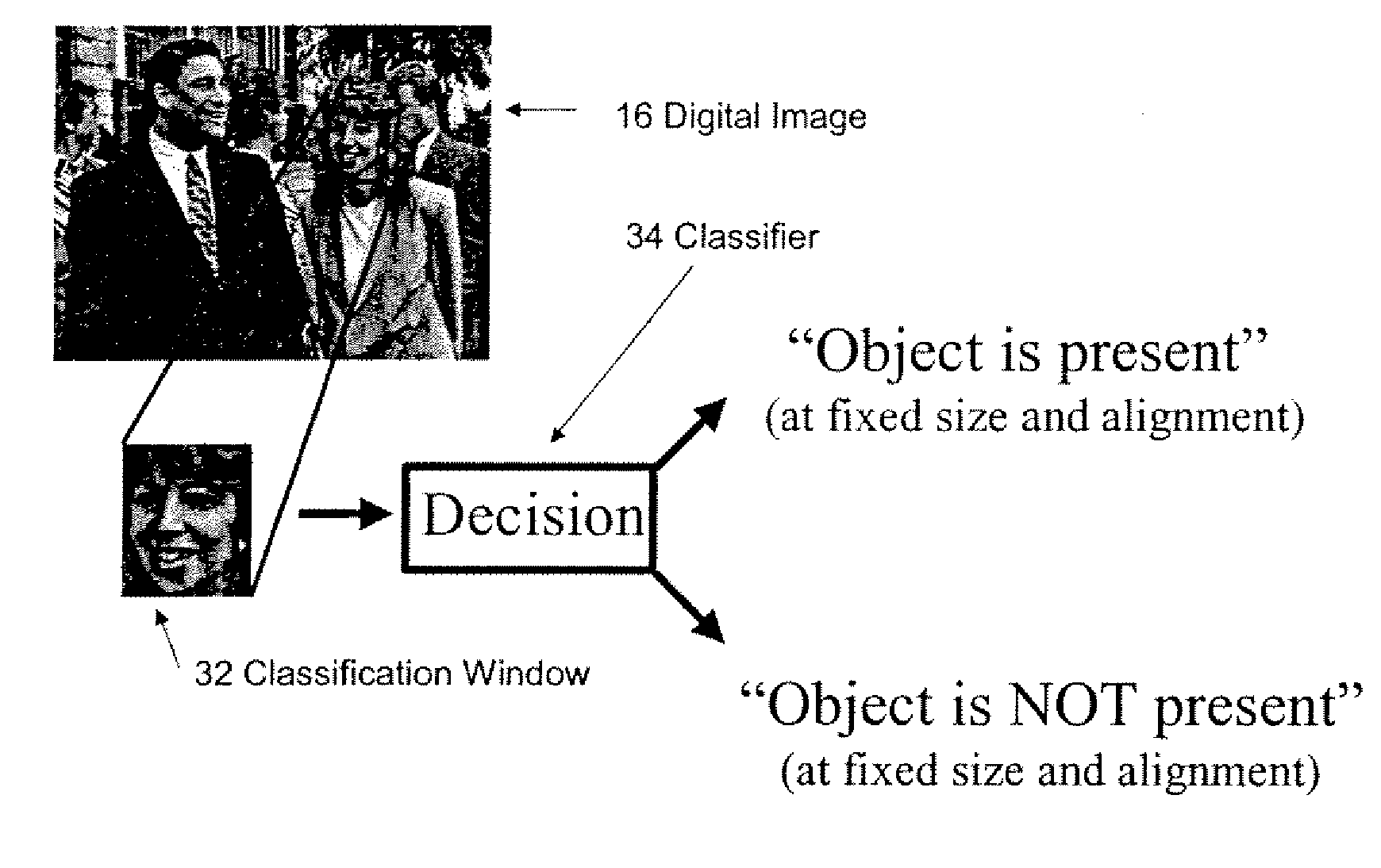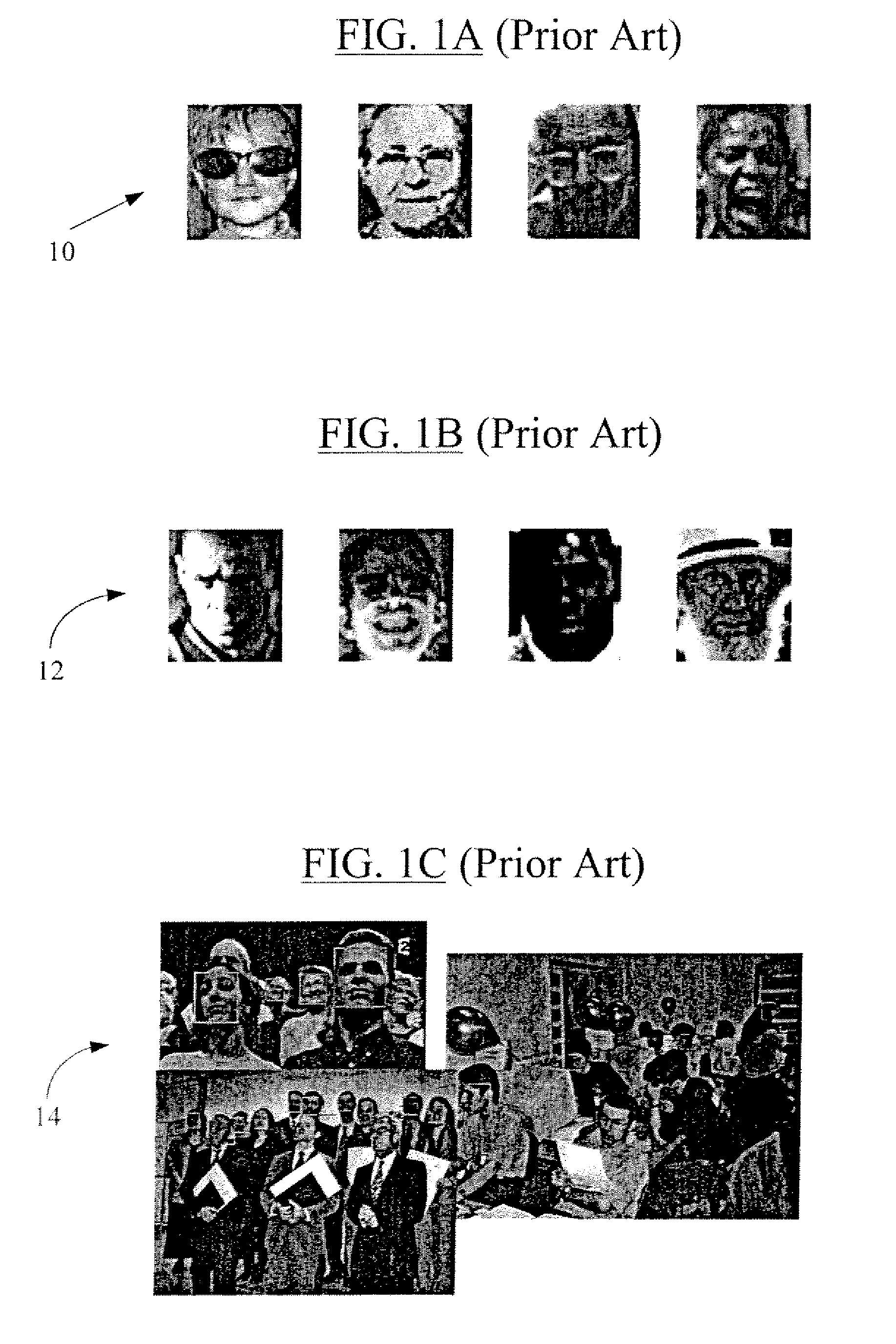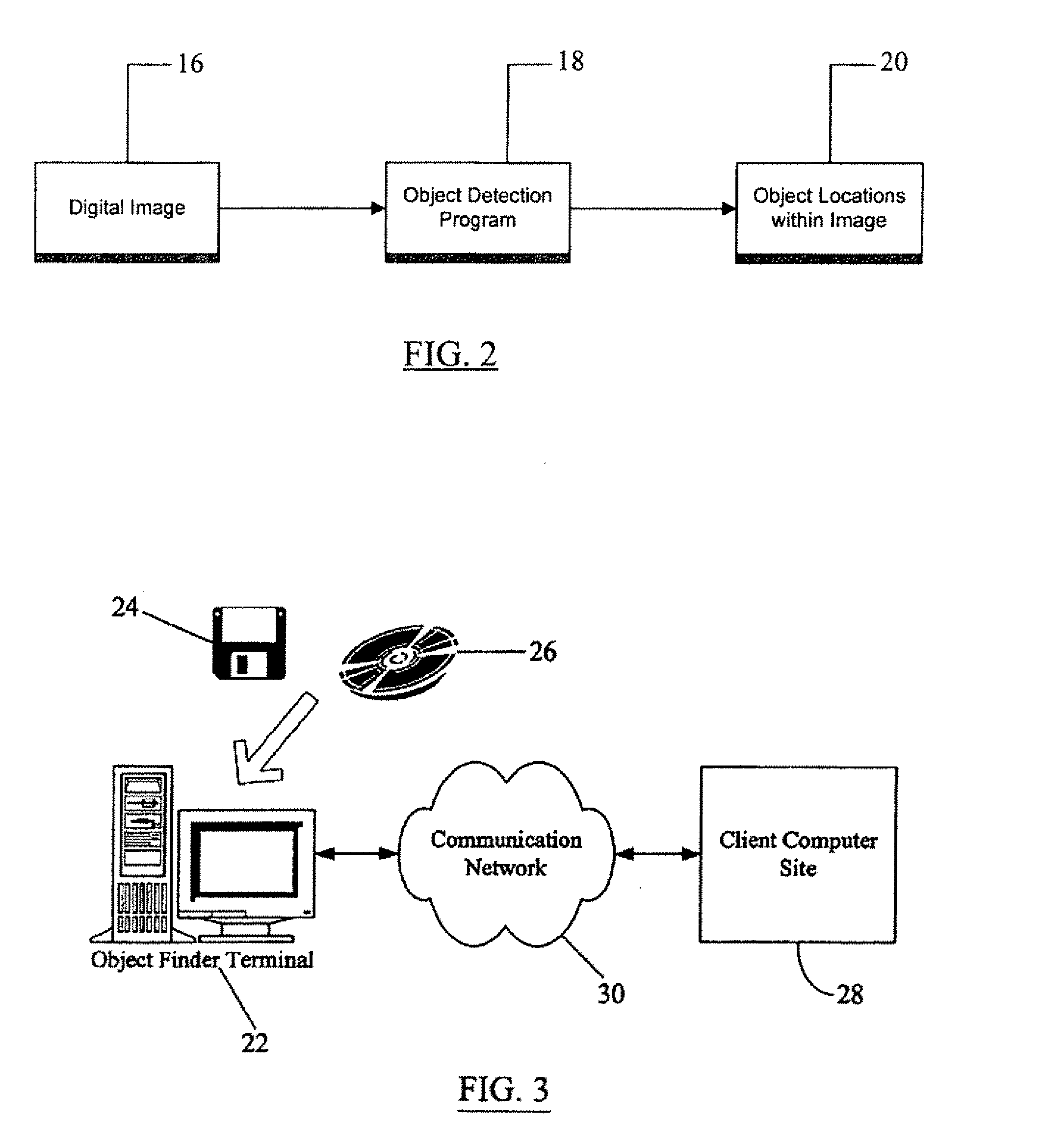Object Recognizer and Detector for Two-Dimensional Images Using Bayesian Network Based Classifier
a two-dimensional image and object recognition technology, applied in the field of image processing and image recognition, can solve the problems of limiting the ability of two-dimensional distances to be different, affecting the ability to represent small areas rich and detailed, and compromit the ability to represent small areas in a rich and detailed way
- Summary
- Abstract
- Description
- Claims
- Application Information
AI Technical Summary
Benefits of technology
Problems solved by technology
Method used
Image
Examples
Embodiment Construction
[0064]Reference will now be made in detail to certain embodiments of the present disclosure, examples of which are illustrated in the accompanying figures. It is to be understood that the figures and descriptions of the present disclosure included herein illustrate and describe elements that are of particular relevance to the present disclosure, while eliminating, for the sake of clarity, other elements found in typical image processing or image detection systems. It is noted at the outset that the terms “connected”, “connecting,”“electrically connected,”“in communication with,” etc., are used interchangeably herein to generally refer to the condition of being electrically connected or being in electrical communication. Furthermore, the term “sub-classifier” is used hereinbelow to refer to a classifier (in a sequence of classifiers that constitute an “overall” classifier) at a particular stage of classification.
[0065]FIG. 2 illustrates an embodiment of a generalized operational flow...
PUM
 Login to View More
Login to View More Abstract
Description
Claims
Application Information
 Login to View More
Login to View More - R&D
- Intellectual Property
- Life Sciences
- Materials
- Tech Scout
- Unparalleled Data Quality
- Higher Quality Content
- 60% Fewer Hallucinations
Browse by: Latest US Patents, China's latest patents, Technical Efficacy Thesaurus, Application Domain, Technology Topic, Popular Technical Reports.
© 2025 PatSnap. All rights reserved.Legal|Privacy policy|Modern Slavery Act Transparency Statement|Sitemap|About US| Contact US: help@patsnap.com



